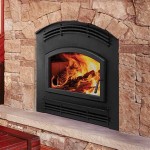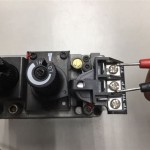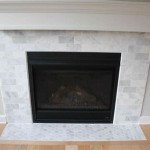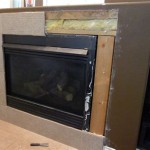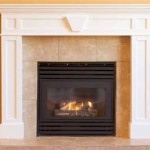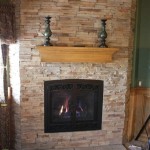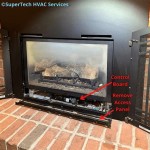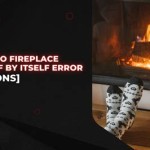Ventless Propane Fireplaces: A Comprehensive Overview
Ventless, or vent-free, propane fireplaces offer a convenient and potentially cost-effective heating solution for a variety of spaces. Unlike traditional wood-burning fireplaces or vented gas fireplaces, ventless models do not require a chimney or flue for exhaust. This eliminates the need for extensive construction and allows for greater flexibility in placement within a home or building. However, their operation and safety aspects necessitate careful consideration before purchase and installation.
Propane is a liquefied petroleum gas (LPG) derived from natural gas processing and crude oil refining. When burned, propane produces heat, water vapor, and carbon dioxide, along with trace amounts of other gases. Ventless propane fireplaces are designed to operate efficiently, burning propane completely enough to minimize the production of harmful byproducts, especially carbon monoxide.
The absence of a venting system is the defining characteristic of these appliances. Instead of directing combustion gases outside, they are released directly into the living space. This fundamentally alters the heating dynamic. Traditional fireplaces lose a significant portion of their heat up the chimney along with the exhaust gases. Ventless models, conversely, retain nearly all of the generated heat within the room, resulting in higher energy efficiency ratings. However, this also means that all combustion byproducts remain indoors, necessitating stringent safety mechanisms and proper usage.
How Ventless Propane Fireplaces Function
Ventless propane fireplaces rely on a sophisticated oxygen depletion sensor (ODS) system. The ODS is a critical safety feature designed to shut off the gas supply if the oxygen level in the room drops below a pre-determined threshold. As a ventless fireplace burns propane, it consumes oxygen. If the room is not adequately ventilated, the oxygen level will gradually decrease. The ODS monitors the oxygen level and, upon detecting a drop, extinguishes the pilot light and shuts off the gas flow, preventing the buildup of carbon monoxide.
The combustion process within a ventless propane fireplace is engineered to be highly efficient. The burners are designed to mix propane and air in precise ratios, maximizing complete combustion. This, in turn, minimizes the production of carbon monoxide and other undesirable byproducts. However, even with efficient burners and the ODS system, proper ventilation remains crucial for maintaining safe indoor air quality.
Most ventless propane fireplaces are equipped with a thermostat or a variable control valve that allows the user to adjust the heat output. This provides a degree of control over the room temperature and propane consumption. Some models also incorporate blowers to circulate the heat more evenly throughout the room.
The exterior design of ventless propane fireplaces varies widely, ranging from traditional fireplace inserts that mimic the appearance of wood-burning fireplaces to more contemporary and minimalist designs. They can be installed as freestanding units, wall-mounted units, or built-in units, offering flexibility in terms of aesthetics and placement within a room.
Safety Considerations and Proper Usage
The primary safety concern associated with ventless propane fireplaces is the potential for carbon monoxide poisoning. Carbon monoxide is a colorless, odorless, and tasteless gas that can be deadly. It is produced when propane is not burned completely. While the ODS system is designed to prevent carbon monoxide buildup, it is not foolproof. Regular maintenance, proper ventilation, and the installation of a carbon monoxide detector are essential for safe operation.
Adequate ventilation is paramount when using a ventless propane fireplace. While these units do not require a chimney, they do require a source of fresh air. Manufacturers typically specify the minimum room size and ventilation requirements in the owner's manual. Opening a window or door slightly can provide sufficient ventilation to prevent the depletion of oxygen and the buildup of carbon monoxide. It is imperative to adhere to the manufacturer's recommendations regarding ventilation.
Regular maintenance is also crucial for ensuring the safe and efficient operation of a ventless propane fireplace. The burners should be cleaned periodically to remove any dust or debris that could impede proper combustion. The ODS system should be inspected regularly to ensure that it is functioning correctly. A qualified technician should perform a comprehensive inspection and maintenance service at least once a year.
It is also important to ensure that the ventless propane fireplace is installed correctly. Improper installation can compromise its safety and efficiency. A qualified technician should perform the installation, ensuring that all connections are secure and that the unit is properly leveled and positioned. Furthermore, using the correct propane pressure is vital. The unit is designed to operate within a specific pressure range, and using the wrong pressure can lead to incomplete combustion and the production of carbon monoxide.
Never use a ventless propane fireplace in a bedroom or bathroom. These rooms are typically smaller and have less ventilation than other areas of the home. The risk of carbon monoxide poisoning is significantly higher in these confined spaces. Also, never leave a ventless propane fireplace unattended while it is operating. It is important to monitor the unit and ensure that it is functioning properly. If you notice any unusual odors or symptoms of carbon monoxide poisoning, such as headache, dizziness, or nausea, immediately turn off the unit and ventilate the room thoroughly. Seek medical attention immediately.
Advantages and Disadvantages of Ventless Propane Fireplaces
Ventless propane fireplaces offer several advantages over traditional fireplaces and vented gas fireplaces. One of the primary advantages is their ease of installation. Because they do not require a chimney or flue, they can be installed in almost any room of the home. This eliminates the need for costly and time-consuming construction. They are also more energy-efficient than traditional fireplaces, as they retain nearly all of the heat generated. This can result in lower heating bills.
Furthermore, ventless propane fireplaces offer greater design flexibility. They are available in a wide range of styles and sizes, making it easy to find a unit that complements the decor of any room. They can also be used as a supplemental heating source, providing warmth and ambiance to specific areas of the home without having to heat the entire house.
However, ventless propane fireplaces also have some disadvantages. The primary disadvantage is the potential for carbon monoxide poisoning. While the ODS system is designed to prevent this, it is not foolproof, and proper ventilation is essential. They also release moisture into the air as a byproduct of combustion. This can lead to increased humidity levels, which can promote the growth of mold and mildew. Individuals with respiratory problems may find that the increased humidity exacerbates their symptoms. Finally, some individuals may find the odor produced by ventless propane fireplaces to be unpleasant.
Despite their potential drawbacks, ventless propane fireplaces can be a safe and efficient heating solution when used properly. By following the manufacturer's instructions, maintaining adequate ventilation, and regularly inspecting the unit, homeowners can enjoy the warmth and ambiance of a fireplace without the need for a chimney or flue.
Selecting the appropriate size ventless propane fireplace for a given room is crucial. Over-sizing can lead to overheating and discomfort, while under-sizing may not provide sufficient heat. The manufacturer's specifications typically indicate the recommended room size for each model. Factors such as insulation, ceiling height, and the number of windows should also be considered when determining the appropriate size.
:max_bytes(150000):strip_icc()/ventless-gas-fireplaces-4160746-hero-f9d4bdcd9bd446eb84406de306f790ba.jpg?strip=all)
How To Pick Out A Ventless Gas Fireplace

50 Free Standing Ventless Gas Fireplace Visualhunt

Ventless Gas Fireplace Propane

Duluth Forge Dual Fuel Ventless Gas Fireplace 26 000 Btu Remote Control Antique White Finish 170105 The Home Depot

Radiance Vent Free Gas Stove The Place

The Best Indoor Ventless Fireplaces For Your Home Or Apartment

Bluegrass Living 55 In Black Ventless Liquid Propane Gas Fireplace The Fireplaces Department At Com

Pleasant Hearth 27 500 Btu 42 In Convertible Ventless Propane Gas Fireplace Heritage Vff Ph26lp 2h2 The Home Depot

The Debate Continues Are Ventless Fireplaces Safe

Duluth Forge 22 Ventless 32 000 Btu Propane Gas Log Set Winter Oak Com
Related Posts

